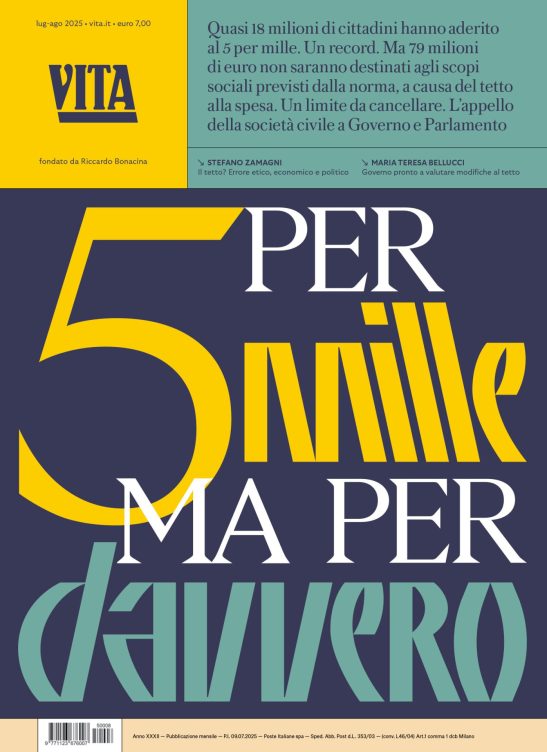Non profit
Core support, or helping philanthropists empower charities
Interview with Jessica Sklair of the Institute for Philanthropy
di Rose Hackman

“Real innovation happens when charities have the security to really develop their work rather than when they have to run around trying to find someone to pay for the photocopier.”
Common sense? It certainly seems like it, but not quite so to many in the philanthropy world according to Jessica Sklair, head of research at the Institute for Philanthropy in London. While financing projects appeals to the common philanthropist, financing charities’ backrooms, their “core”, is distinctly less popular.
“Contrary to popular belief, charities with lower overheads are less effective than those with higher ones,” says Sklair.
In order to respond to this common misconception, the Institute for Philanthropy has published a paper entitled “Supportive to the core – why unrestricted funding matters.”
Vita Europe talked to Jessica Sklair on the subject.
What is going on in the Third Sector right now that brought on this research?
There’s a sort of myth that has emerged within the Third Sector that high overhead costs are a bad thing. So we’ll see things like the big household charities handing out leaflets with pie charts saying only 5% of your contribution will go to our administrative costs and the rest will go to straight to the projects. This is actually quite damaging to the Third Sector.
Why?
It promotes a culture where donors are no longer willing to support the core and the heart of what organisations really do. An organisation is no longer able to launch a project well if it does not have the core elements in place to do that.
Is this based on a particular study?
Yes a few actually, but in particular there was a study carried out by the Urban Institute and Indiana University in the States. They looked at overhead costs in charitable organisations and found that contrary to popular belief, charities with lower overheads are less effective than those with higher ones. Not having the money to put into central operations can be very damaging to non profit organisations – in the same way that it is for for profit ones.
Does this represent a shift in philanthropy models as a whole?
Definitely. At the Institute for Philanthropy, with the work we’re doing with donors and our courses, we’re really seeing a move towards an investment approach to giving, and core support is at the heart of this approach. With trends like venture philanthropy and other forms of strategic philanthropy which have been developed over the past decade, we’re seeing a critique of more traditional forms of philanthropy which are risk averse. This new form of philanthropy is more than just about money – it’s about thinking about the way you want to invest in charities and care about them; be able to give them skills and increase their capacity. This newer philanthropy is using metrics for evaluation, thinking very carefully about objectives and what you want to achieve. This model very strongly says that philanthropy should mean giving flexible capital to charitable organisations, which is where this idea of core support comes in.
So tell me more about what core support actually means, is it just about flexible capital?
Yes and no. It is more about a kind of funding relationship which will take the form of a partnership. A partnership where the philanthropist will sit down and say – “I really like what you’re doing, what do you need to do it better or even just keep it going so successfully”. Often the answers which will come back from organisations are “we just need the finance to keep our core work going.” In a funny way even if the answer comes back as “we need money for a project” then that still is core support because the charity is being given the power to say what it most needs.
Why are donors so reluctant to give core support? Is it anything to do with the glamour aspect of directly funding a project and seeing impacts?
Possibly that’s one of the reasons. It depends on the way that philanthropists approach their own philanthropy and their own funding. A person who wants to see their name on the front of a building might have a certain approach to their type of funding. Strategic, engaged donors will have a different kind of objective, looking for embedded long term change, more than anything else. There are many other issues too…
Such as?
There is a widespread belief that innovation is really good and that the projects are where the change really happens.
Our research and other research quoted in the paper show that real innovation happens when charities have the security to really develop their work rather than running around to find someone to pay for the photocopier. True innovation comes from a comfortable and secure infrastructure which enables them to properly concentrate on their work.
One of your case studies in the paper, Catherine Zennstrom, talks about the need to break down the dichotomy between core and project altogether. What is her vision?
Catherine Zennstrom was an excellent example in core support. Her area of concern surrounds human rights in Europe. What she’ll do is sit down and ask herself what the main issues are here, what needs to be changed, what are people doing, how can we get people to move, where are people not working together where they could be working together. Her way of thinking is almost a way of thinking in terms of giving core support to the whole sector. She talks to people and supports organisations by looking at the whole picture. Sometimes she will support a whole project but it will be by looking at the broader picture. Funding to get a piece of legislation through parliament in a particular country is a concrete project but that may then shift things in such a way that she opens up possibilities of other things happening.
So it’s a thinking man’s philanthropy…
(Laughs) Yes.
www.instituteforphilanthropy.org
Si può usare la Carta docente per abbonarsi a VITA?
Certo che sì! Basta emettere un buono sulla piattaforma del ministero del valore dell’abbonamento che si intende acquistare (1 anno carta + digital a 80€ o 1 anno digital a 60€) e inviarci il codice del buono a abbonamenti@vita.it
